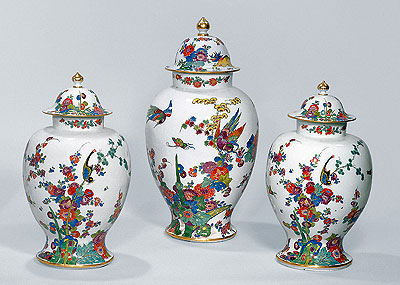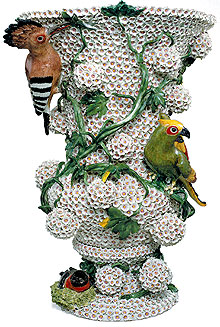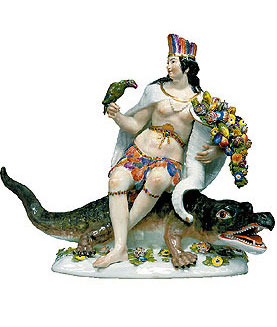Main information:
Lustheim Palace
Ernst Schneider Foundation's Collection of Meissen Porcelain
The Collection of Meissen Porcelain is not managed by the Bavarian Palace Administration, but is a branch of the Bavarian National Museum.

Three vases with "Indian" flowers and animals
Meissen, ca. 1730/35
The first branch museum of the Bavarian National Museum was installed in the year 1971 in Lustheim Palace. It houses the world-famous collection of early Meissen porcelain donated by the industrialist Professor Ernst Schneider (1900-1977), which is as comprehensive and important as the porcelain collection in the Dresden Zwinger.
Over 2,000 exquisite items of porcelain are displayed in the setting of the electoral summer palace, creating a baroque ensemble of particular charm. Lustheim fulfils the dream of a "porcelain palace" that was never realized in the lifetime of Augustus the Strong, the founder of the Meissen Manufactory.
The collection provides a comprehensive overview of the products of the Meissen porcelain manufactory from its establishment in 1710 until the Seven Years' War (1756-1763).
The period covers tableware and figures from the Böttger period, the famous chinoiseries of the porcelain painter Johann Gregorius Höroldt, the "Indian" decoration particularly admired by Augustus the Strong and masterpieces by the modeller Johann Joachim Kaendler, represented by lifelike animal figures.
The numerous pieces of porcelain from the coat of arms service of Count Sulkowski and the legendary swan service of Count Heinrich von Brühl are particular highlights, and give some idea of the grand scale on which banquets were held in the baroque era.

Snowball vase with birds
Model probably by
Johann Joachim Kaendler,
Meissen, 1741

Group representing the continent of America
Model by Johann Friedrich
Eberlein, Peter Reinicke and Johann Joachim Kaendler, Meissen, 1745
© Text and pictures: Bayerisches Nationalmuseum (Photos: Walter Haberland)

Facebook Instagram YouTube